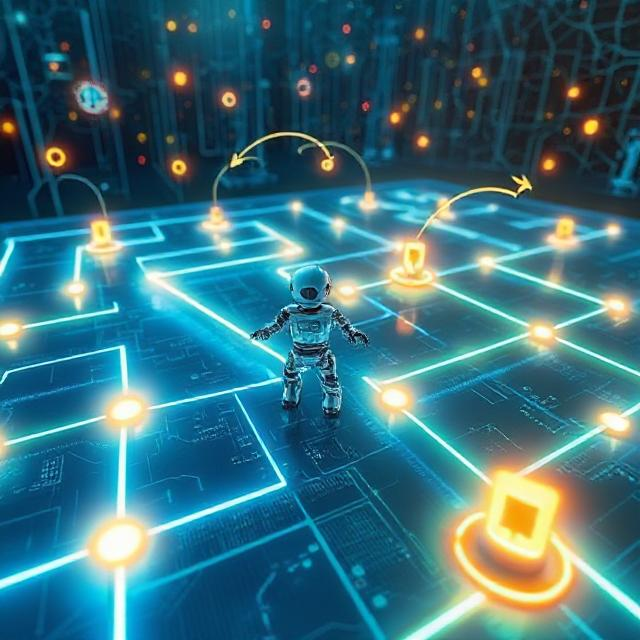Reinforcement Learning (RL) is a branch of Artificial Intelligence (AI) that teaches machines to learn through decision-making based on rewards and errors. Similar to how people gain knowledge from their experiences, RL enables computers to get better by testing various actions and figuring out what yields the best results.
What is Reinforcement Learning?
Teaching a machine through Reinforcement Learning resembles training a pet. Think about teaching your dog a new trick. You give your dog a treat when it sits as you command. No treat comes if it ignores you. The dog figures out that sitting when told leads to a reward so it keeps doing it. Machines learn in a similar way—they receive rewards for good actions and pick up lessons from their mistakes.
1. The Process of Reinforcement Learning
Reinforcement Learning uses a try-and-see approach. The AI interacts with its surroundings and gains knowledge from the results of its choices. Here’s how it happens:
- Agent: The AI system that decides what to do.
- Environment: The place where the agent works (like a game, a car, or a robot in a factory).
- Action: The things the agent does (such as turn left, grab something, or slow down).
- Reward: Good feedback for right moves and bad feedback for wrong ones.
- Policy: A plan that helps the agent make better choices as time goes on.
2. Example of Reinforcement Learning in Real Life
Picture a robot trying to walk. , it might topple over and get negative feedback. But when it moves the right way, it receives a reward. After numerous attempts, it learns how to walk by steering clear of mistakes and repeating successful steps.
3. Types of Reinforcement Learning
RL has two main categories:
- Positive Reinforcement: The agent gets rewards for correct actions, which makes it more likely to repeat them.
- Negative Reinforcement: The agent faces penalties for incorrect actions, which teaches it to avoid mistakes in the future.
Where is Reinforcement Learning Used?
Reinforcement Learning finds applications in many fields to make machines smarter and boost their effectiveness. Some examples include:
- Self-Driving Cars: AI picks up how to drive on roads by sticking to traffic laws and dodging obstacles.
- Video Games: Computer-controlled rivals get better at their game plans by learning from each match they play.
- Robots: Machines in factories figure out how to put products together quicker and with fewer mistakes.
- Finance: AI guesses stock market patterns and makes clever choices about where to invest money.
Challenges of Reinforcement Learning
Even though RL is a strong tool, it has some hurdles:
- Learning Takes Time: AI must try lots of actions before it finds the best way to do things.
- Tricky Environments: Some jobs need AI to handle surprise events and changing conditions.
- Needs Powerful Computers: Training RL models requires high-end computer systems to crunch tons of data.
The Future of Reinforcement Learning
Reinforcement Learning keeps getting better and will shake up fields like healthcare, robotics, and automation. Down the road, AI might make wiser choices and tackle even trickier issues, making our lives a breeze.
